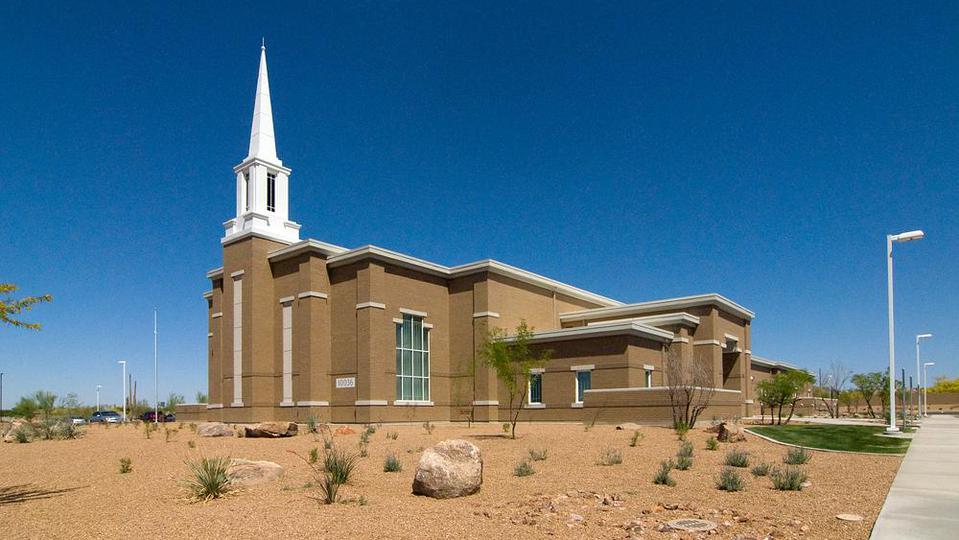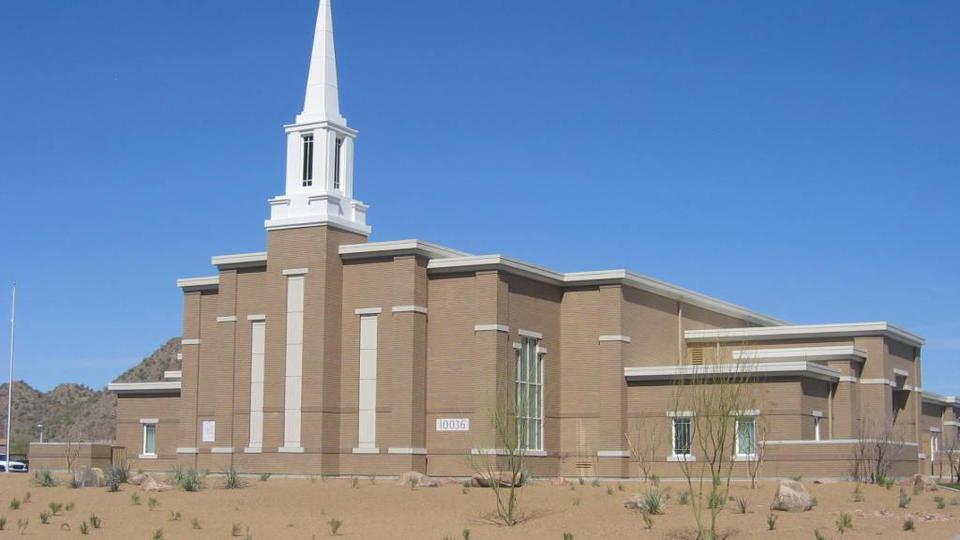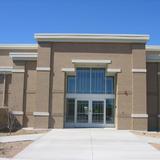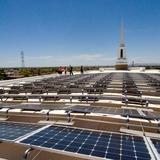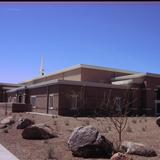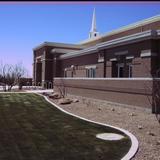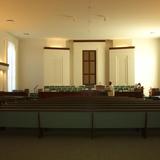The Church of Jesus Christ of Latter-day Saints unveiled its first-ever solar-powered meetinghouse in the Northern Hemisphere a year ago in Farmington, Utah. The building earned Silver LEED (Leadership in Energy and Environmental Design) certification for implementing elements of “green” design.
| The new Mesa meetinghouse appears to have a flat roof, but is actually a low-slope design that hides a heat reflective roof and solar panels. Photo courtesy of John Power. 2011 Intellectual Reserve, Inc. All rights reserved | 1 / 8 |
Now, a meetinghouse just completed in Mesa, Arizona, is the second of three prototypes that will use the sun’s energy to produce as much electricity as the building consumes in a year to achieve a “net-zero” utility cost.
It is the latest use of state-of-the-art technology by the Church in its construction design. H. David Burton, presiding bishop of the Church, said, “For decades we have looked for innovative ways to use natural resources in our meetinghouses that reflect our commitment as wise stewards of God’s creations.”
Data taken over the last 12 months shows the building in Farmington, Utah, has saved nearly $5,000 in utility costs and reduced the structure’s carbon footprint. Most of the savings come from the solar photovoltaic system that generates electrical power by converting solar radiation into direct electrical current.
“As the price of solar goes down, which it’s projected to continue to go down, and as utility rates continue to go up, the viability of solar will become stronger and stronger,” said Jared Doxey, director of architecture, engineering and construction for the Church. “It definitely is a technology we will be using in the future.”
The new building is also a departure from the Church’s sloped-roof design that has been a mainstay model for more than 30 years. The architecture of the Mesa meetinghouse appears to have a flat roof but in actuality is a low-sloped roof design. While being aesthetically pleasing, it allows proper drainage (as opposed to flat roofs) and hides from view solar panels and a highly reflective rubber membrane that covers the roof.
“We wanted a white reflected roof membrane that would radiate heat away from the building,” Doxey said. “The specified roofing material [on the Mesa meetinghouse] reduces the heat gain by about 85 percent compared to a dark asphalt roof. We wanted to see the impact of that on the air conditioning in terms of reduced utility cost.”
The Mesa building has also incorporated other innovative energy-saving materials and devices to reflect environmentally and economically sound construction practices:
- Low-E Solarban 70 windows that block 78 percent of the sun’s heat energy
- Improved insulation on the outside walls and roof of the structure
- High efficiency furnaces equipped with variable speed motors
- Lighting that is 20 percent more efficient
- Automatic light switches that turn off when rooms are not occupied
- Landscaping that uses drought-tolerant plants and automated irrigation sensors that save 50 percent more water than previous designs
System monitoring is another addition that pinpoints mechanical malfunctions on the property via the Internet. Emails are automatically sent to Church facility managers off premises notifying them of any problem. The system reduces travel time and troubleshooting by service providers.
As with its predecessor in Farmington, Utah, the Mesa meetinghouse is on track to, once again, earn one of the construction industry’s most prestigious distinctions: the LEED Silver Certificate. The achievement demonstrates a proactive effort to reduce energy, waste and water usage while providing an environmentally friendly, cost efficient house of worship.
